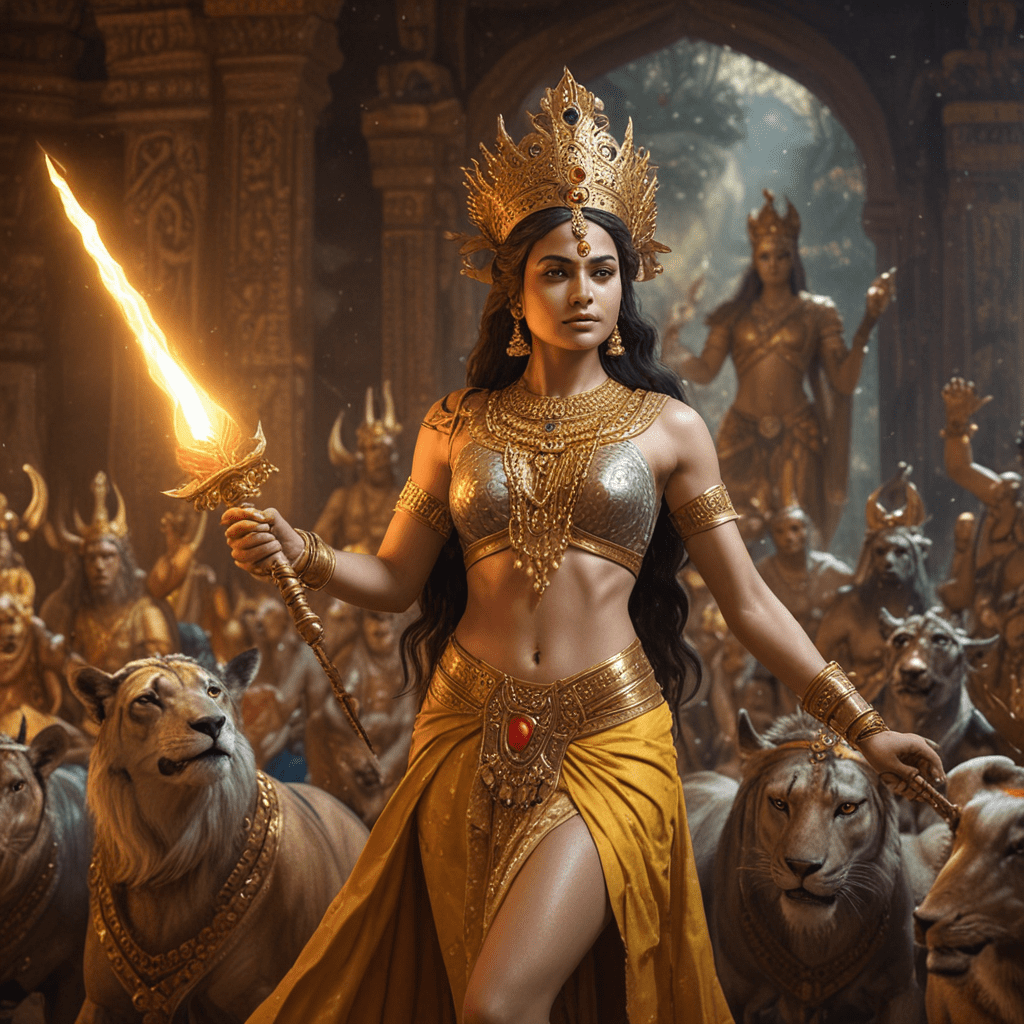Beneath the Surface: The Underworlds of Myth and Reality
I. Introduction
The term ‘underworld’ evokes a rich tapestry of meanings, stretching across both mythological narratives and the stark realities of our world. In mythology, the underworld often refers to a realm where souls reside after death, a concept deeply embedded in the cultural and spiritual fabric of societies. In a more contemporary context, the underworld can signify the hidden aspects of society, such as crime, poverty, and the struggles of marginalized communities.
Exploring underworlds allows us to delve into the depths of human experience, revealing the fears, hopes, and moral lessons that underpin our existence. This article will navigate through various mythological underworlds, their symbolism, representations in literature and art, their roles in religion and spirituality, as well as their reflections in modern society and environmental contexts.
II. Mythological Underworlds: A Journey Through Cultures
Mythological underworlds serve as a mirror reflecting the values and beliefs of the cultures from which they originate. They often embody the mysteries of death and the afterlife, marking a transition from the known to the unknown.
A. Greek Mythology: Hades and the Realm of the Dead
In Greek mythology, the underworld is ruled by Hades, the god of the dead. Known as the realm of the dead, it is a complex place divided into various sections, including the Elysian Fields for the virtuous and Tartarus for the wicked. The river Styx serves as a boundary between the world of the living and the dead, with Charon, the ferryman, guiding souls across.
B. Egyptian Beliefs: Duat and the Afterlife
The ancient Egyptians believed in Duat, the underworld where the dead would journey after life. This realm was not only a place of judgment but also a landscape filled with perilous obstacles. The heart of the deceased was weighed against the feather of Ma’at, symbolizing truth and justice, determining their fate in the afterlife.
C. Norse Mythology: Hel and the Fate of Souls
In Norse mythology, Hel is the realm presided over by the goddess Hel. It is a place for those who did not die a heroic or honorable death. Unlike the fiery pits of other mythologies, Hel is often depicted as a cold and desolate place, highlighting the varied perceptions of the afterlife across cultures.
D. Other Cultural Perspectives: Mesopotamian, Hindu, and Native American Views
- Mesopotamian Views: The underworld, known as Kur, was seen as a dark and dreary place, where souls led a shadowy existence, highlighting the Mesopotamian culture’s views on mortality.
- Hindu Beliefs: The concept of Naraka represents a hellish underworld where souls face the consequences of their actions before being reincarnated, embodying the cycle of life, death, and rebirth.
- Native American Perspectives: Many tribes have unique beliefs regarding the afterlife, often viewing the underworld as a continuation of life, where ancestors reside and guide the living.
III. The Symbolism of Underworlds in Myth
Underworlds often symbolize complex themes of death, rebirth, and moral lessons.
A. Underworlds as a Representation of Death and Rebirth
Many myths utilize the underworld as a metaphor for transformation. The descent into the underworld often signifies a necessary journey for personal growth and renewal, emphasizing the cyclical nature of life.
B. The Journey Motif: Heroes and Their Descents
Heroic journeys frequently include a descent into the underworld, where protagonists confront their fears or seek wisdom. This motif is prevalent in stories such as:
- Orpheus’s quest to retrieve Eurydice.
- Dante’s journey through the circles of Hell in “Inferno.”
- Inanna’s descent to the underworld in Sumerian mythology.
C. Moral and Ethical Lessons Derived from Underworld Narratives
Mythological narratives surrounding the underworld often impart moral lessons about virtue, justice, and the consequences of one’s actions, serving as both cautionary tales and sources of inspiration.
IV. Underworlds in Literature and Art
The influence of underworlds extends beyond mythology, permeating literature and art throughout history.
A. Literary Depictions: Dante’s Inferno and Its Influences
Dante Alighieri’s “Inferno” is perhaps the most famous literary exploration of the underworld. It presents a vivid depiction of Hell, structured into nine circles, each representing different sins and their punishments. This work has inspired countless interpretations and adaptations in literature.
B. Artistic Interpretations: Paintings and Sculptures Inspired by Underworld Myths
Artists throughout history have drawn inspiration from mythological underworlds, creating works that capture the essence of these realms. Notable examples include:
- Hieronymus Bosch’s “The Garden of Earthly Delights.”
- Michelangelo’s “The Last Judgment.”
- Gustave Doré’s illustrations for “Dante’s Inferno.”
C. Modern Adaptations: Film and Contemporary Literature’s Take on Underworld Themes
Modern cinema and literature continue to explore underworld themes, often reinterpreting them for contemporary audiences. Films like “What Dreams May Come” and “The Nightmare Before Christmas” illustrate how ancient concepts can be reimagined in modern storytelling.
V. Underworlds in Religion and Spirituality
Religious beliefs often incorporate concepts of the underworld, reflecting cultural attitudes towards death and the afterlife.
A. Comparative Analysis of Afterlife Beliefs Across Religions
Different religions offer varied interpretations of the afterlife, with some emphasizing paradise and others focusing on punishment or purification. The following are notable beliefs:
- Christianity: Heaven and Hell, with an emphasis on redemption.
- Buddhism: Rebirth and the cycle of samsara.
- Islam: Jannah (paradise) and Jahannam (hell), with a focus on judgment day.
B. Rituals and Practices Associated with Underworld Beliefs
Many cultures have rituals to honor the dead and ensure safe passage to the afterlife, such as:
- The Day of the Dead in Mexico, celebrating and remembering deceased loved ones.
- Funeral rites in various religions, which vary widely in their practices and beliefs.
C. The Psychological Impact of Underworld Concepts on Believers
The beliefs surrounding the underworld can significantly influence the psychological well-being of individuals, providing comfort in the face of mortality or contributing to existential anxiety.
VI. The Underworld in Modern Society
In our contemporary world, the concept of an underworld manifests in various forms, often reflecting societal issues.
A. Urban Underworlds: Crime, Poverty, and Hidden Communities
Urban areas can give rise to ‘underworlds’ characterized by crime, poverty, and marginalized communities. These hidden societies often exist parallel to the mainstream, highlighting social inequalities.
B. Subcultures and Their Connections to the Idea of an Underworld
Subcultures often embrace themes of rebellion and otherness, creating their own ‘underworlds’ within society. Examples include:
- Punk culture, with its defiance of mainstream values.
- Goth subculture, which draws on themes of death and the macabre.
C. Technology and the Virtual Underworld: Dark Web and Digital Anonymity
The rise of technology has given birth to a new form of underworld: the dark web. This hidden part of the internet allows for anonymity, leading to both positive and negative outcomes, including:
- Access to forbidden knowledge and resources.
- Involvement in illegal activities and the proliferation of cybercrime.
VII. Psychological Perspectives on Underworlds
From a psychological standpoint, the concept of underworlds can provide deep insights into the human psyche.</p




